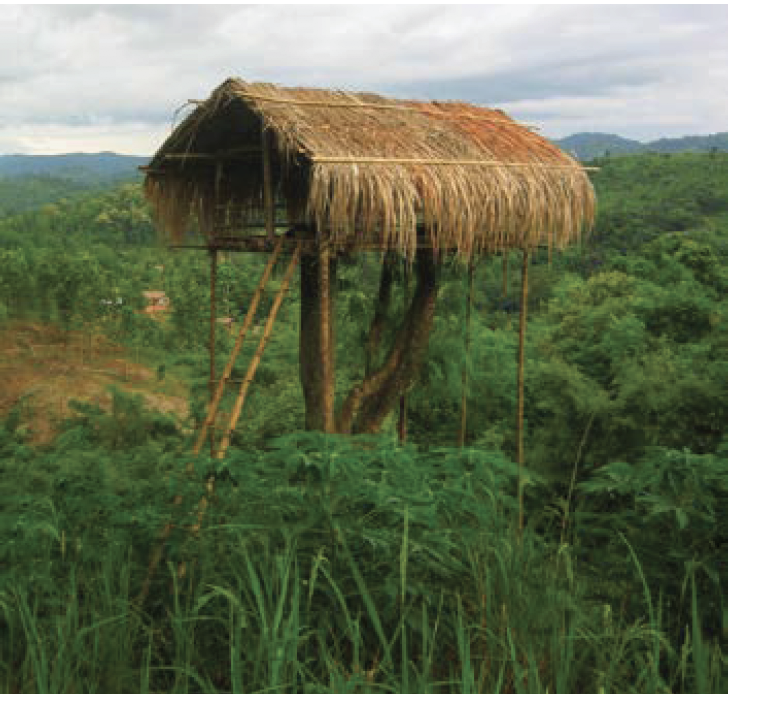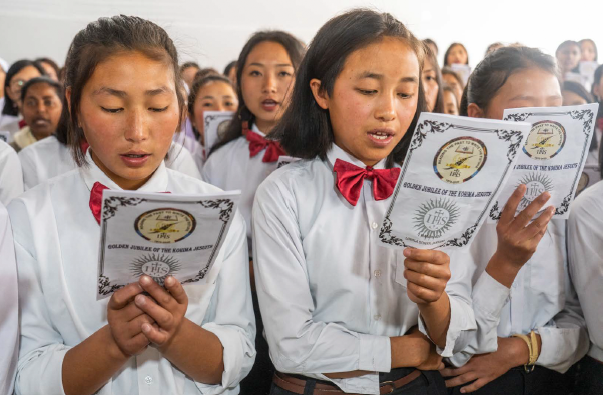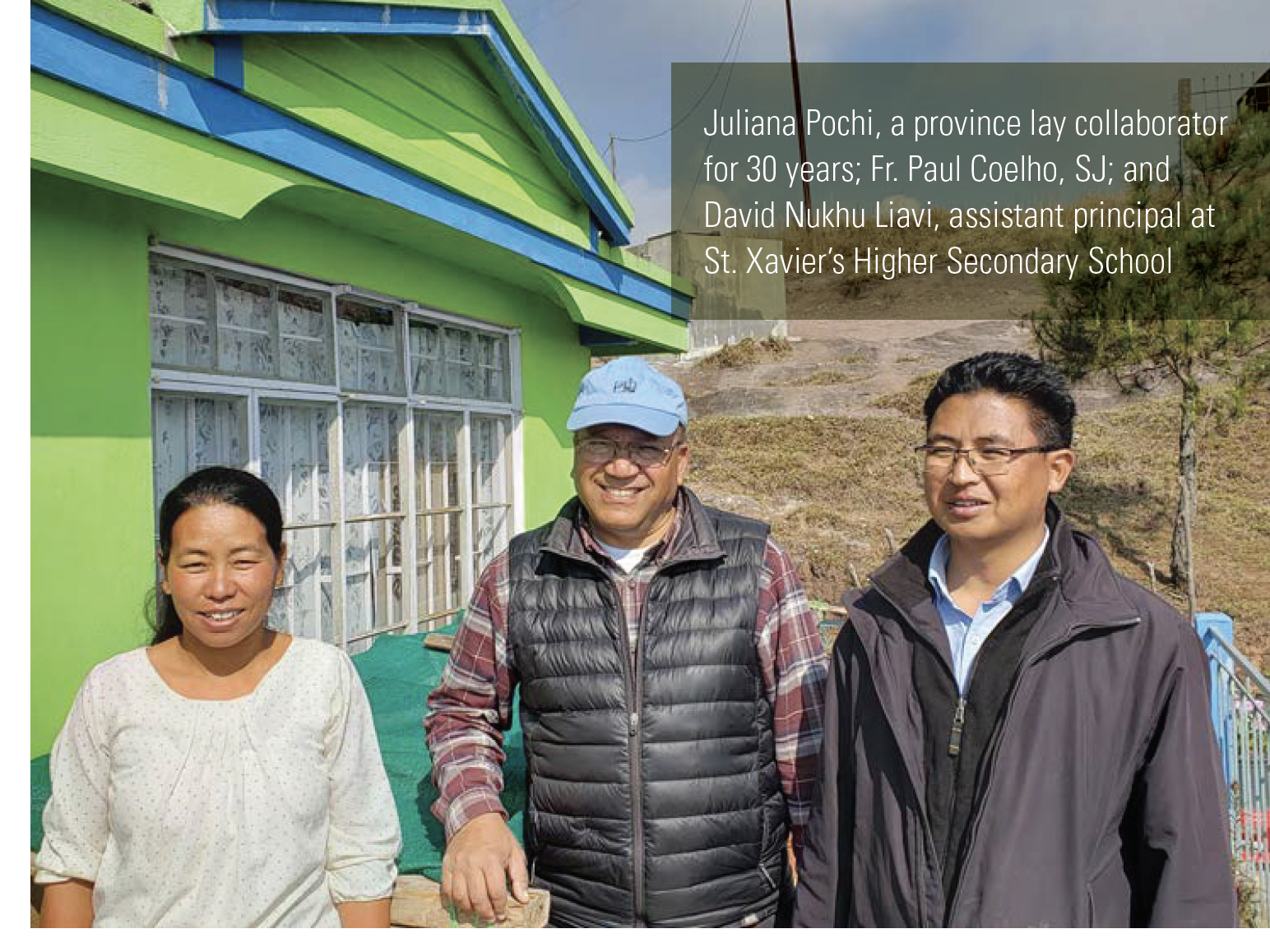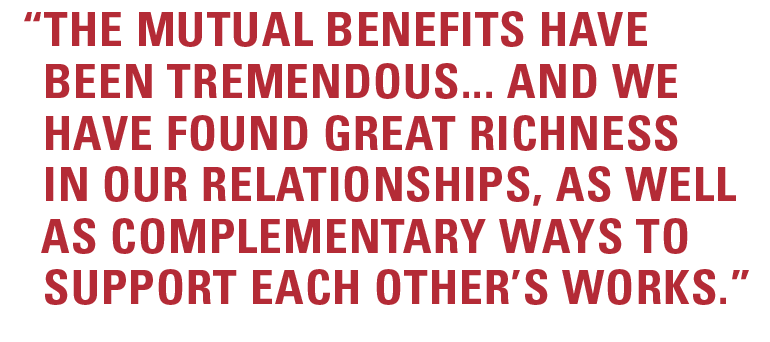
“I Learned that the educated do not have — and do not need to have — answers to others' problems.”
Following in Pioneers’ Footsteps and Forging New Paths
By Amy Korpi
From the first days of the Society of Jesus, when Francis Xavier and his companions landed in Goa (India) in 1542, Jesuits have been establishing relationships in Asia. Within 10 years of his landing, the future patron saint of missions had crossed large parts of Asia, covering what are now vital areas for Jesuits in this part of the world— including the Indonesian archipelago and Japan.
While Xavier never fulfilled his dream of a mission to mainland China (he died of a fever while waiting for a boat to take him there), Jesuit missionary Matteo Ricci, who was born the year Xavier died, fulfilled that dream 30 years later. Ricci sailed to Macao, the Portuguese colony in South China, where he took an intensive language course mastering Chinese to perfection, dressed first in the clothing of a Buddhist monk and later as a Confucian mandarin, absorbed Chinese culture, and earned the trust and admiration of the country’s leaders in the process.
While it is an understatement to say the Society’s situation in Asia has had its ups and downs since then (noting, for example, a number of Jesuit martyrs), today there is a dynamic Jesuit presence in the region represented by two of the Jesuits’ six worldwide conferences (large groups of administrative divisions): the Jesuit Conference of South Asia and the Jesuit Conference of Asia Pacific.
The Midwest Jesuits are blessed to be part of a long tradition of innovative works in service of the Church and people of God in Asia. These pages highlight just a few cases.

Photo: Fr. Don Doll, SJ
Since 2002, Midwest Jesuits have had a unique relationship with northeast India’s Kohima Region.
Built on mutuality and solidarity, the relationship has seen the Midwest Province supporting the rapidly growing Kohima Region to expand its work into underserved communities, while Kohima has contributed to the formation of Midwest Jesuits and lay leaders who have experienced life and work there. Additionally, Kohima Jesuits have studied and lent their talents, skills, and knowledge to our work here in the United States.
 For example, over the years, immersion groups comprised of Jesuits and laypeople have had the privilege of accompanying the Jesuits and indigenous communities of Kohima in daily life. Paddy Gilger, SJ (today Fr. Gilger), shared life lessons gained from his six weeks abroad in Partners magazine in 2013:
For example, over the years, immersion groups comprised of Jesuits and laypeople have had the privilege of accompanying the Jesuits and indigenous communities of Kohima in daily life. Paddy Gilger, SJ (today Fr. Gilger), shared life lessons gained from his six weeks abroad in Partners magazine in 2013:
“Fom sitting in silence as groups of tribal women would work together with the sisters or a brother Jesuit to figure out how to make a system of microloans work this time, in this village, I learned that the educated do not have—and do not need to have—answers to others’ problems.”
Father Paul Coelho, SJ, exemplifies the symbiotic relationship between the Midwest and Kohima Jesuits (who are celebrating the 50th anniversary of their arrival to northeast India this year). He grew up in India and, as a young Jesuit, served in the tribal region of northeast India, mostly in the field of education.
Coming to the United States in 1999, he earned a PhD at Marquette University, with a dissertation focused on motivation and academic achievement among tribal students of northeast India. Then, from 2004 to 2017, Fr. Coelho worked in the Midwest, as principal at Red Cloud Indian School in Pine Ridge, South Dakota; assistant to the president for student affairs at Jesuit Academy of Omaha; in the Schlegel Center for Service and Justice and as instructor in the education department at Creighton University; and as assistant vocation promoter, provincial assistant for vocations, and regional vocation director for the Midwest Jesuits.
Father Coelho returned to northeast India in 2017 to complete a feasibility study exploring the need for a college in the South West Khasi Hills district of the Meghalaya state in the Kohima Region. After a commitment by the Jesuits to launch the college, he was assigned to develop and open it and to start offering higher secondary classes.
“Serving the socioeconomically disadvantaged rural tribal population has been an option embraced by the Jesuits here from the time Kohima became a region in 1995,” Fr. Coelho explains. “And, given the native intelligence of the local children, the commitment of their families to education, and the work ethos of the local people (Marams), I am confident this college will be successful in its mission, in the spirit of and with the principles of Jesuit education.” 
While the school’s first building (an existing two-room structure) opened for grade 11 in 2019, construction nears completion on the second structure, which will be a 12-classroom block to accommodate a growing upper secondary and begin early tertiary level college studies for bachelor levels.
About the relationship between the Midwest and Kohima Jesuits, Fr. Coelho says, “The mutual benefits have been tremendous. From the start, the idea was to focus on relationships, not so much on human or monetary resources. And we have found great richness in our relationships, as well as complementary ways to support each other’s works.”
Supporters of the Midwest Jesuits are ministering in Asia as well—through regular and generous gifts channeled through the province to various missions and through the outpouring of aid for people affected by natural disasters in the region over the past few decades.
In addition, the Midwest Jesuits facilitate major gifts from people like the Pinto family, covered in a 2018 issue of Jesuits, who built the Olive Garden Children’s Home when family member Fr. Julian Fernandes, SJ, of the Kohima Region, shared his province’s desire to construct a residence for children attending a Jesuit-sponsored school in Meghalaya (near Bangladesh).
Please watch for more information on Fr. Coelho’s initiative and other ministries of Jesuits in Asia in the summer issue of Jesuits magazine.
Return to Jesuits Spring 2020 Index